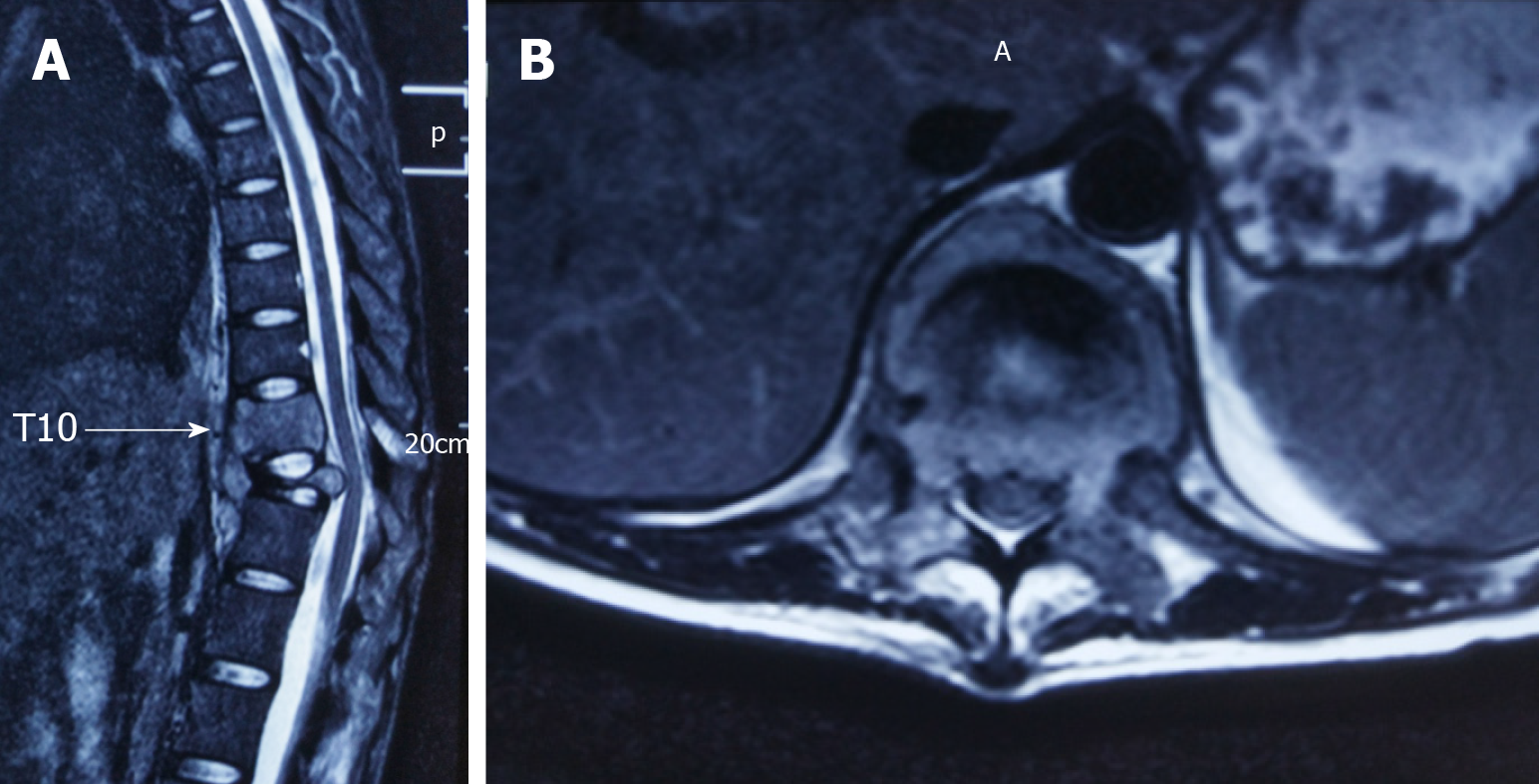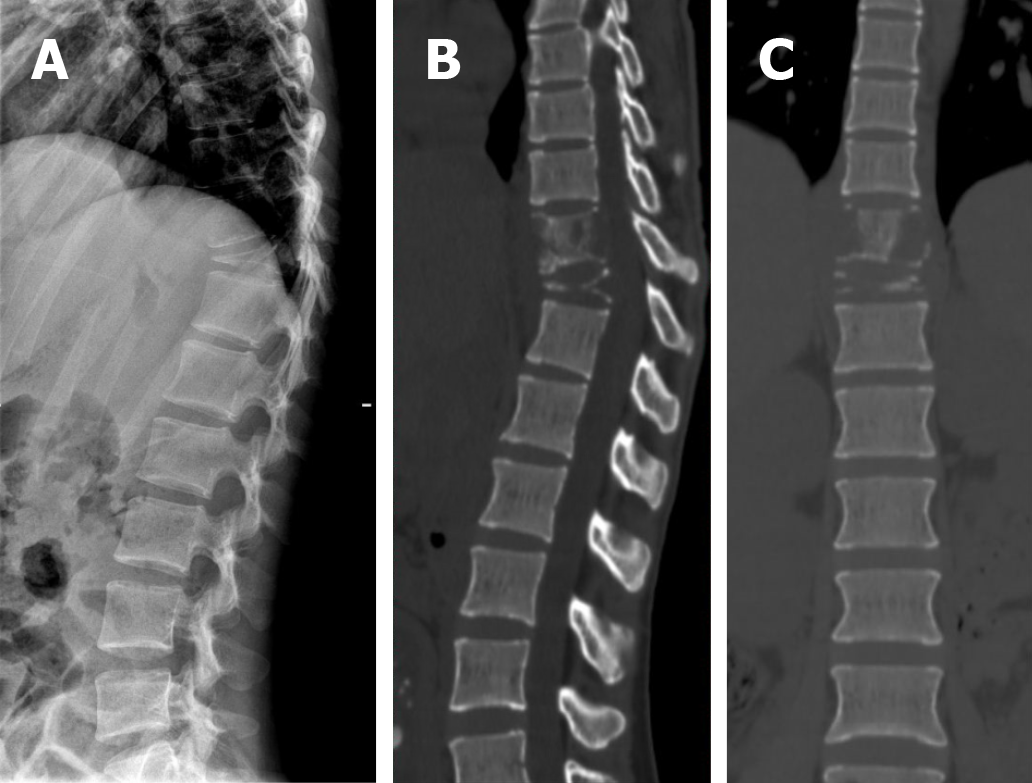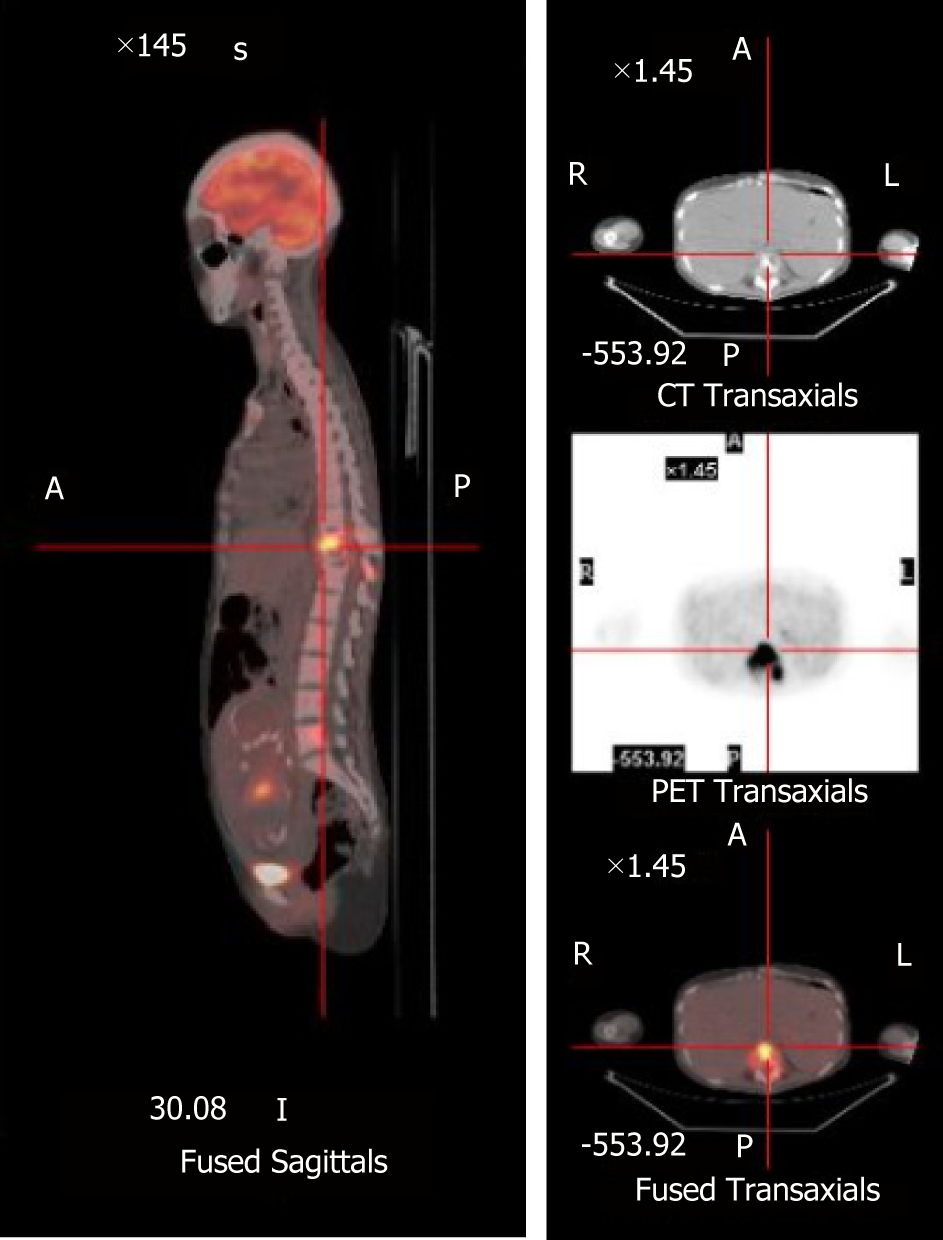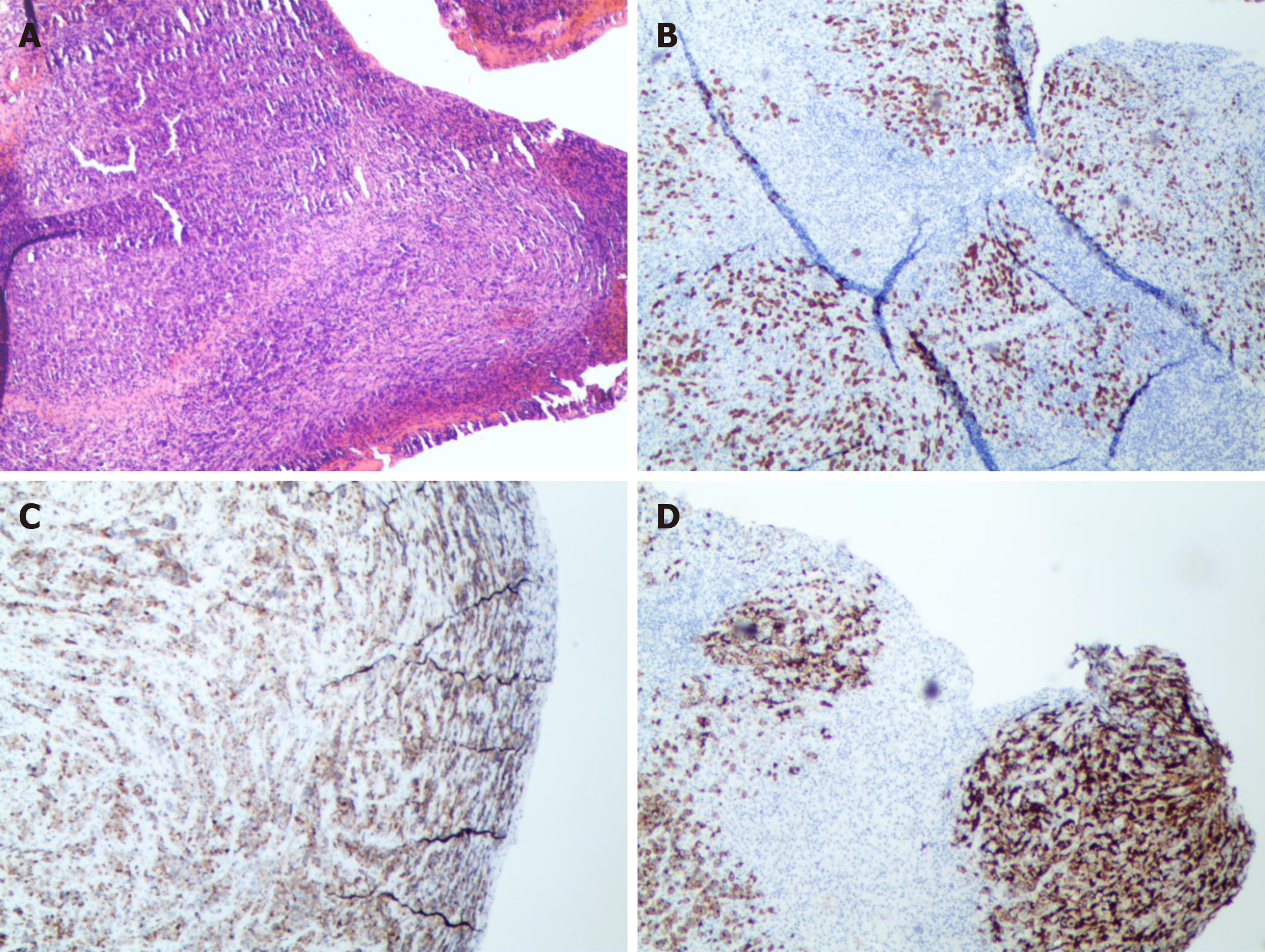Copyright
©The Author(s) 2019.
World J Clin Cases. Sep 26, 2019; 7(18): 2857-2863
Published online Sep 26, 2019. doi: 10.12998/wjcc.v7.i18.2857
Published online Sep 26, 2019. doi: 10.12998/wjcc.v7.i18.2857
Figure 1 T2-weighted magnetic resonance imaging.
A: Sagittal T2-weighted MRI of the thoracolumbar spine; B: Axial T2-weighted image MRI showed the spinal cord was compressed at the T11 vertebra level.
Figure 2 Sagittal X-ray (A), sagittal and coronal computed tomography reconstruction (B and C) reported multiple bone destruction in the T10 and T11 vertebrae.
Figure 3 FDG-PET-CT showed FDG-avid lesions in the T10 and T11 vertebrae.
Figure 4 Low-magnification view of the hematoxylin and eosin staining shows diffuse infiltration of poorly differentiated mononuclear tumor cells (A).
Immunohistochemical staining (partial posting) showed positive results for CD3, CD30 and CD246 (ALK protein) (B–D).
Figure 5 X-ray showed good stability of the thoracolumbar spine 30 mo after therapy.
- Citation: Yang S, Jiang WM, Yang HL. ALK-positive anaplastic large cell lymphoma of the thoracic spine occurring in pregnancy: A case report. World J Clin Cases 2019; 7(18): 2857-2863
- URL: https://www.wjgnet.com/2307-8960/full/v7/i18/2857.htm
- DOI: https://dx.doi.org/10.12998/wjcc.v7.i18.2857













